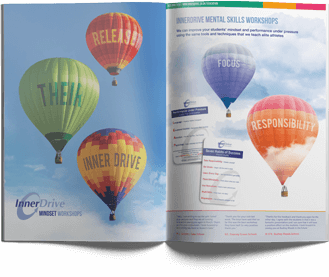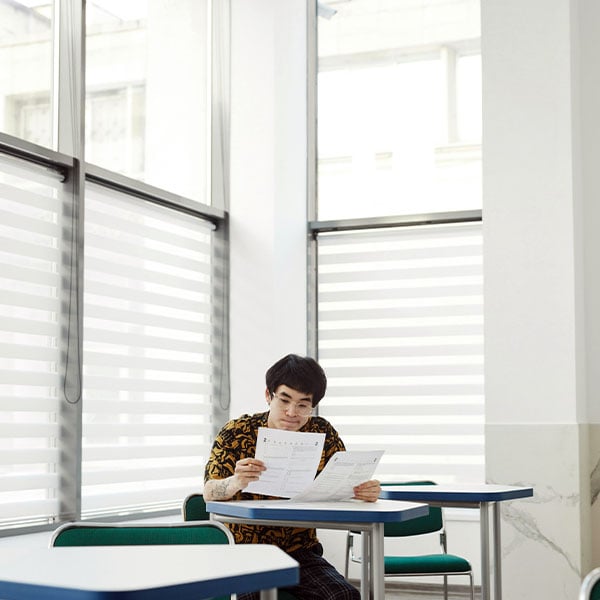It’s the start of the school year. Which means memories of hot temperatures, England’s World Cup run, and Love Island romances have started to fade. Instead, they are now replaced with thinking about the new academic year and the challenges that lie ahead.
For many students, this means potentially studying new subjects and having to build relationships with new teachers, and for the older ones, an increasing emphasis on independent studying. Many flourish with this transition, but research (and indeed common sense) tell us that some are known to struggle. So, why is this the case? And what can be done to help students start the new school year well?
The Link Between Uncertainty and Stress
Recent research from University College London found that uncertainty is a big trigger for stress. It turns out it’s not the worst-case scenario that stresses us most – it’s the not knowing. If we want to reduce stress, we have to reduce uncertainty. So how can we do this?
Clear Rules and Guidelines
If uncertainty causes stress, then one way to minimise its impact is to provide students with information so that they know what to expect. One way to remove any ambiguity is to have clear rules and guidelines in place so that students know exactly what is expected of them. This should be done at the start of the year, as part of an induction, where students are told how much independent work they need to do and how to spend their free study sessions. This provides a firm platform that can be returned to over the course of the year.
Developing Resilient Learners
A recent overview by leading researchers highlights that for an environment to facilitate resilience it needs to be high in both challenge and support. Too much challenge and no support results in excessive stress, burnout and isolation. Too much support but not enough challenge can lead to complacency and boredom. It therefore seems if we want to help students cope with change, we shouldn’t rush to do too much for them, whilst also being aware that being available for support is essential.
How teachers can gauge when a student is struggling under too much challenge is an art, not a science. Knowing the difference between a stumbling block and an insurmountable barrier often comes with time and experience. Repeated failure, extreme emotional responses, as well as withdrawing and disengaging from the tasks are often signs that more support may be needed.
Click here to find more information to develop resilience in students.
Encouraging a growth mindset
 Researchers have recently started examining why some students cope better than others with change and uncertainty. To do this, they monitored teenagers for two years to see the role their mindset played on how well they coped with transitions. They found that those with a growth mindset were more likely to value efforts, have effective coping strategies, felt less helpless, and ultimately went on to achieve higher grades than those with a fixed mindset. This is perhaps unsurprising, as if you feel that your abilities are fixed and set in stone, then transitions and new situations can be stressful, as you don’t know if you have the required amount of ability needed in the new environment.
Researchers have recently started examining why some students cope better than others with change and uncertainty. To do this, they monitored teenagers for two years to see the role their mindset played on how well they coped with transitions. They found that those with a growth mindset were more likely to value efforts, have effective coping strategies, felt less helpless, and ultimately went on to achieve higher grades than those with a fixed mindset. This is perhaps unsurprising, as if you feel that your abilities are fixed and set in stone, then transitions and new situations can be stressful, as you don’t know if you have the required amount of ability needed in the new environment.
What is really interesting is that the same group of researchers also found that the ability to develop a growth mindset can be improved, and doing so can help reverse the previous decline in students with a fixed mindset. Unfortunately, a recent survey from the US found that the majority of teachers don’t feel confident in doing it and would like additional training on it. These articles on ‘How to develop a growth mindset’, ‘How not to teach growth mindset’, and ‘Developing a growth mindset for maths’ are good starting points for this.
Encourage a Long Term View
A recent study on undergraduates offered some clues about how to manage transition and develop resilience during change. The researchers found that keeping a sense of perspective was a key factor in how students developed their resilience. The trick is to keep an eye on the big picture as well as the small details. The end goal helps maintain motivation on tough days, while also focusing on the smaller details helps maintain focus and concentration.
Final Thought
Uncertainty breeds stress: equipping students with knowledge and information will help. Teaching students proactive coping strategies and developing a growth mindset culture will help them overcome everyday challenges and setbacks along the way. And finally, providing both high expectations and high levels of support – alongside balancing that with a sense of perspective– will help equip them with the skills needed to be resilient learners.
A full length version of this article was originally posted for Optimus Education. You can read the more in depth version with additional tips at Making the transition from GCSE to A level.







